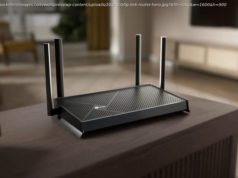We’re testing out the Samsung Galaxy Note 9 at the moment, and here is five things we’ve found so far.
Five days of using a smartphone is a good period of time to get to know the nuances and different features it offers alongside how powerful it is and how long the battery can last, but you have to wait until tomorrow to read our full Samsung Galaxy Note 9 review.
We just have some finishing touches to complete to our full review before we can give our final verdict (like one more day of battery testing), but we wanted to share some of the details we’ve noticed from five days with the latest Samsung phone.
You may have caught Matt Swider’s 72 hours with the phone article earlier this week, and we want to offer a few more insights ahead of our final verdict. Be sure to read on to learn about the five of the most interesting things we’ve learnt about the device.
We’re loving the contrasting yellow S Pen that you get with the Ocean Blue Galaxy Note 9 color, as it looks so different to the stylus you’ve had on previous versions of the Note line up. The main upgrade here isn’t the color though, it’s the fact it’s now connected via Bluetooth.
On previous Galaxy Note phones the nib has worked like a stylus, but it hasn’t been able to do anything when not touching the phone. Now, with the Note 9, you can press the button on the side of the pen to remotely control features on the phone.
It means you can take photos without having to hold the phone. You can prop your phone up and take selfies using it as a remote control, and that’s fantastically fun feature that allows you to better photograph groups of people and take some inventive shots.
It’s not a groundbreaking idea, but the remote functionality also allows you to change some features on your phone such as controlling the music on your handset or cycle through your photo gallery. It’s a cool idea, but don’t upgrade purely for this.
We’ve been using last year’s Samsung Galaxy Note 8 a lot recently in preparation for this launch, and the battery life on that phone just isn’t good enough for power users. We’ve been testing it lots over the last year, so it’s sure the battery life would be shorter now than it was at launch, but we don’t remember the last time it lasted for a whole day.
The positive side is the Samsung Galaxy Note 9 seems to have solved that and offers all-day battery life – power users included. We’ve found the Note 9 regularly got us through a whole day. In fact, in our first five days of using the phone we’ve yet to run it completely down to 0%.
You probably won’t be able to get this phone to last much longer than a day with a high level of screen-on time, but we’ve found this better battery life makes it a lot easier to recommend.
You may get different results considering how you use the phone, but we’d be impressed if you’ll be using it more than we are throughout a working day. For our full verdict of the battery, you’ll have to wait until our full review of the Galaxy Note 9.
The Bixby button is the worst, and that hasn’t changed on the Galaxy Note 9.
We’ve hit it regularly by accident when trying to unlock the phone, and sometimes it has even paused the music we’ve been listening to. While we’re frustrated by that, we’re coming to terms with the fact Bixby is developing quickly and it’s nearly at the point where it can compete with Google Assistant.
For example, we asked Bixby to download Uber and it executed the command directly. Google Assistant won’t do that, which is strange considering Bixby directs you to the Google Play Store.
Many people will probably turn off the Bixby button when immediately getting the phone, but we’d recommend keeping the voice assistant on so you can use it throughout your daily use.
This is obviously different for some people, but we don’t feel like 1TB is necessary for the vast majority of Android users. We’ve only been using the device for a short amount of time but we’ve filled it with apps, downloads, games and much more, but we’ve only used 35GB so far.
That’s including the software onboard the phone as well, so you’d really struggle to be able to fill a whole 512GB of space plus the extra 512GB you can get from a microSD.
It’s a bit of a shame Samsung didn’t opt for offering a 256GB option as well to cover off anyone who’s looking for that middle ground between 128GB and 512GB. Our advice is seriously consider how much space you need before you spend big on the larger variant.
We don’t always rely on benchmarking scores for our phone reviews – it’s more about how each phone handles daily tasks such as playing games or handling lots of apps open at the same time – but you may find it interesting to know the Note 9 does seem to be stronger in the UK than it is in the US.
In the UK (and some European countries), it’s running the Exynos 9810 chipset directly from Samsung that we found to have an average multi-core score of 9,051 and single-core score of 3,698.
The Qualcomm Snapdragon 845 variant that’s available in the US is currently scoring around 8,875 for the multi-core and 2,378 for the single-core. Both versions of the phone are the 6GB variants, not the 8GB. That’s quite a big difference on paper.
So far we’ve yet to notice any struggling, stuttering, or slowdown in either of the versions of the phone though, so it’s unlikely you’ll notice this difference in everyday usage. It’s an interesting quirk nonetheless.






